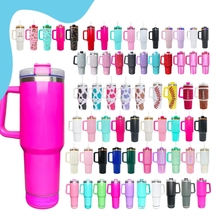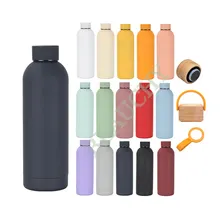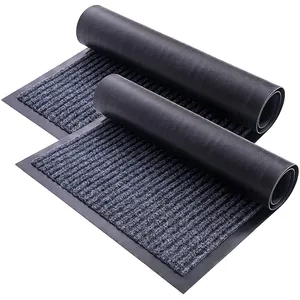What is Traditional Korean Floor Mat
Traditional Korean floor mats, often referred to as bangchima or jumak in Korean, are a type of covering used on floors in Korean-style living spaces. These mats are typically made from natural materials such as straw, paper, or fabric and are traditionally used in both residential and commercial settings. The primary function of a Korean floor mat is to provide a clean, comfortable, and warm surface for sitting, sleeping, or walking. They are especially favored for their traditional aesthetic, which complements the design of hanok, the traditional Korean house.
These floor mats are designed with various principles in mind. They are typically made to be lightweight and easy to move, store, and clean. They may include features such as non-slip backing, which ensures safety and stability on different flooring types. Some are woven in a way that allows air circulation, which can be beneficial in humid environments. The materials used in their construction often possess natural properties such as being antimicrobial, eco-friendly, and free from harmful chemicals.
For those seeking to add a touch of Korean culture to their home or business premises, traditional Korean floor mats are an ideal choice. They not only serve their practical purpose but also contribute to the overall ambiance and design of a space. Whether used in a living room for gatherings or a commercial setting such as a hotel lobby or restaurant, these floor mats can be a charming and functional addition.
Types of Traditional Korean Floor Mats
Traditional Korean floor mats come in several types, each with specific features and use cases:
-
Matteul-style Mat: This type is characterized by a thick, plush feel that is perfect for use as a primary sleeping mat or alongside other bedding in a traditional Korean-style floor setup. It's commonly utilized in homes, guest rooms, or hotels that offer floor bedding options.
-
Puzzle Mat: Puzzle mats consist of interlocking pieces that can be connected to create a custom-sized sleeping area. They are often used in homes for children's play areas or in educational settings for interactive learning spaces.
-
Foldable Mat: These mats are designed for easy storage and portability, featuring multiple panels that can be compactly folded. This type is ideal for travel, outdoor use such as camping or picnics, or as temporary bedding solutions.
-
Rolling Mat: Rolling mats can be compactly rolled up for storage and transportation. They're typically thinner than other types and are suitable for everyday use in homes or commercial spaces like yoga studios.
-
Non-Slip Mat: With added features like non-slip surfaces or backing, these mats are perfect for use in environments where slippage is a concern, such as kitchen floors or outdoor picnic areas.
How to choose Traditional Korean Floor Mat
When businesses are in the market for traditional Korean floor mats, there are several considerations they must keep in mind to ensure they make the right choice for their specific needs:
Firstly, it's important to consider the intended use case for the mat. A hotel might require durable and stain-resistant mats that can withstand high foot traffic and maintain their appearance over time. In contrast, a traditional Korean home would prioritize eco-friendly materials and designs that contribute to a comfortable and welcoming living environment.
Material composition is another crucial factor; for example, cotton and silk are commonly used for their soft texture and luxurious feel while being breathable and hypoallergenic. On the other hand, seagrass and straw mats offer a natural and eco-friendly option that is also antimicrobial.
Additionally, the chosen mat should align with the aesthetic of the space it will be used in. For instance, a classic silk mat may be chosen for an upscale hotel suite while a vibrant cotton mat could be better suited for a trendy café.
Finally, businesses need to account for practical considerations such as size (some mats may need to be custom-sized), pile height (which dictates the level of comfort), and whether additional features like non-slip backing are necessary for safety purposes. By taking into account these factors along with the cultural significance of the mat design within Korea, businesses can find an appropriate and appealing traditional Korean floor mat for their commercial needs.
About Traditional Korean Floor Mat on Alibaba.com
Alibaba.com stands out as a global marketplace connecting buyers with suppliers offering an extensive selection of Traditional Korean Floor Mats. With over two decades of experience facilitating B2B transactions across various industries, Alibaba.com has become synonymous with reliability and diversity in product offerings.
Buyers looking for Traditional Korean Floor Mats will find a multitude of options that cater to different room spaces—be it a cozy bedroom or a vast public area requiring durable materials. The platform's user-generated content allows buyers to filter through products based on features such as material type, technics used in manufacturing, style preferences, and even specific holiday themes.
Alibaba.com's commitment to supporting small and medium-sized businesses is evident through services like Trade Assurance which protects payments until delivery is confirmed. This focus on security and quality assurance makes Alibaba.com not just a marketplace but a trusted partner for businesses worldwide looking to source premium Traditional Korean Floor Mats efficiently and with confidence.
Common FAQs for Traditional Korean Floor Mat
What are the benefits of using Traditional Korean Floor Mats?
Traditional Korean Floor Mats offer a blend of cultural heritage with functionality. They provide natural insulation, comfort underfoot, and create a connection with traditional Korean living.
How do I determine the right material for a Traditional Korean Floor Mat?
Consider the intended use and environment. For high-traffic areas, materials like wool or silk may be more durable, while for low-traffic areas, cotton or linen could suffice.
Can Traditional Korean Floor Mats be customized?
Yes, many suppliers on Alibaba.com offer customization options for Traditional Korean Floor Mats, including choice of material, size, color, pattern, and thickness.
Are there eco-friendly options available for Traditional Korean Floor Mats?
Yes, eco-friendly options include mats made from natural fibers like jute, seagrass, or bamboo, which are sustainable and biodegradable.
What are the maintenance requirements for Traditional Korean Floor Mats?
Regular vacuuming or gentle spot cleaning with a mild detergent is generally recommended to maintain the appearance and longevity of Traditional Korean Floor Mats.
How do I choose the right size for a Traditional Korean Floor Mat?
Consider the dimensions of the space where the mat will be placed. Mats should be proportional to the room size and shape; common sizes range from small to large, and some are available in custom sizes.
Can Traditional Korean Floor Mats be used outdoors?
Some materials are suitable for outdoor use. Look for features like waterproofing, UV resistance, and durability when selecting a mat for outdoor areas.
Are there any non-slip options for Traditional Korean Floor Mats?
Yes, many Traditional Korean Floor Mats are designed with non-slip backings to prevent accidents, especially in high-traffic areas.
How thick should a Traditional Korean Floor Mat be?
The thickness depends on the intended use; thicker mats offer more cushioning and insulation, which is beneficial in areas where sitting directly on the floor is common.
What styles of Traditional Korean Floor Mats are available?
Traditional Korean Floor Mats come in various styles including classic, contemporary, Persian, Wilton, and more to suit different interior design preferences.
How can I ensure a Traditional Korean Floor Mat is easy to clean and maintain?
Opt for machine-washable materials such as cotton or polyester blends that can be cleaned quickly and easily.
Are there any special care instructions for wool or silk mats?
Wool and silk mats should be handled with care; wool can be vacuumed while silk may require professional cleaning methods to avoid damage.
What is the expected lifespan of a Traditional Korean Floor Mat?
The lifespan depends on material quality and usage intensity but with proper care, a well-made Traditional Korean Floor Mat can last for several years.




































 浙公网安备 33010002000092号
浙公网安备 33010002000092号 浙B2-20120091-4
浙B2-20120091-4